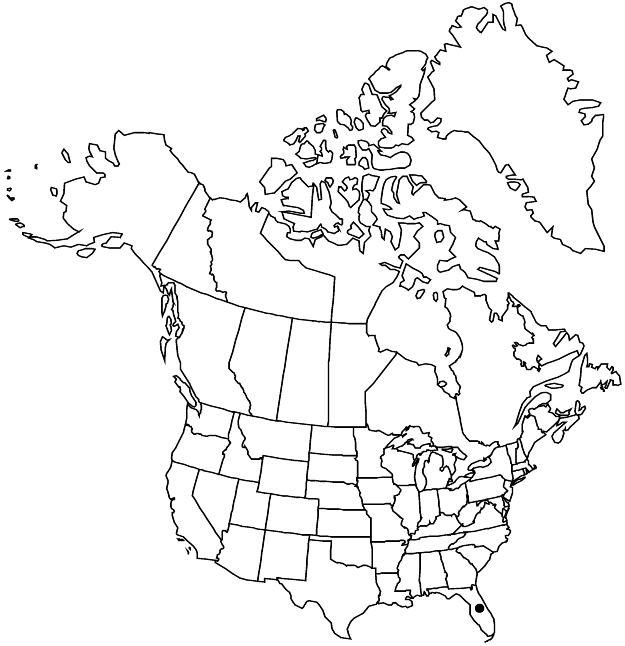Polygonella basiramia
Brittonia 36: 40. 1984.
Herbs, perennial, gynodioecious, 3–8 dm. Stems erect, branched or below ground level, glabrous or scabrous. Leaves fugacious; ocrea margins ciliate; blade linear, (3.5–)7–19(–28) × 0.2–0.5(–0.7) mm, base barely tapered, margins not hyaline, apex acuminate, minutely scabrous. Inflorescences (10–)14–22(–30) mm; ocreola encircling rachis, only the base adnate to rachis, apex acuminate. Pedicels spreading to reflexed in anthesis, sharply reflexed in fruit, 0.3–0.6 mm, as long or much longer than subtending ocreola. Flowers bisexual or pistillate; outer tepals loosely appressed in anthesis and fruit, white to pinkish, distal portion of midrib often inconspicuously greenish, narrowly oblong, 0.7–1.5 mm in anthesis, margins entire; inner tepals loosely appressed in anthesis and fruit, white to pinkish, narrowly oblong, 0.8–1.5 mm in anthesis, margins entire; filaments dimorphic, pubescent basally; anthers deep red; styles and stigmas ca 0.1 mm in anthesis. Achenes exserted, reddish brown to yellow-brown, 3-gonous, 2.2–2.8 × 0.5–0.7 mm, shiny, smooth. 2n = 22.
Phenology: Flowering Sep–Dec.
Habitat: Xeric, white sand in rosemary scrub
Elevation: 30-60 m
Distribution

Fla.
Discussion
Of conservation concern.
Polygonella basiramia is known only from the Lake Wales, Winter Haven, Lake Henry, and Bombing Range ridges of central peninsular Florida (S. P. Christman and W. S. Judd 1990). Habitat loss is a serious threat to this species, which disperses and colonizes new scrub habitat better than other regional endemics. C. V. Hawkes and E. S. Menges (1995) have shown a significant positive correlation between the amount of open-sand habitat and both plant density and seed production at sites where this species grows.
P. O. Lewis and D. J. Crawford (1995) considered Polygonella basiramia to be an annual; C. V. Hawkes and E. S. Menges (1995) treated it as a short-lived perennial. It is closely related to P. ciliata and was treated as a variety of that species by J. H. Horton (1963). G. L. Nesom and V. M. Bates (1984) advocated recognition of both taxa at the species level.
Polygonella basiramia is in the Center for Plant Conservation’s National Collection of Endangered Plants.